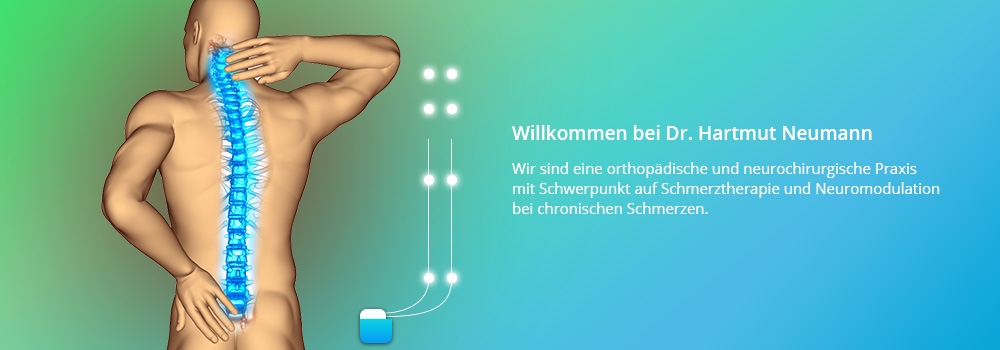The sympathetic and parasympathetic nervous systems
The sympathetic nervous system makes the heart beat faster and more strongly; it speeds up breathing, inhibits bowel function, and the organism prepares for extreme exertion, stress, fight or flight.The sympathetic nervous system is complemented by the parasympathetic nervous system, which activates digestion, makes the heart rate slow down, and makes the body relax and regenerate.
Some people suffer from burning pain, some from a dull pain that spreads – this always points towards the involvement of our autonomic nervous system, which cannot be influenced by our conscious mind. The autonomic nervous system is closely linked to the central and peripheral nervous systems. It runs alongside the spine like a double pearl necklace on the side closest to the abdomen.
Arthrosis, spinal operations, whiplash, nerve root injuries, inflammation, broken bones, circulatory disorders and polyneuropathy can all cause pain that may be eased by an infiltration of the sympathetic nervous system.
Using x-ray imaging checks, a particularly long syringe is directed past the spine towards the sympathetic cord. A small quantity of contrast medium is used to check that it is in the right position. Once the syringe is in the correct position, a local anaesthetic (often mixed with cortisone) is injected. Pain is reduced only for as long as the local anaesthetic has an effect, usually for several days.
Life-threatening complications and serious drug intolerances are extremely rare. Injuries to blood vessels, haematomas and infections are also rare. Particularly rare are cases of nerve damage resulting in lasting paralysis, sensory impairment or pain. Injuries to the abdominal aorta, the ureter, the lymphatic vessels and abdominal organs are possible.
Thanks to our rich experience in neurosurgery, however, we have never experienced any complications at our practice. Why not get in touch? We would be more than happy to advise you.

